Lifelines, Pulpit & Pushpit
Image Gallery
Research
Lifelines
- Lifelines should be at least 30 inches high, preferably higher. They should have backup plates, but they should not be bolted through cored portions of the deck. (All in the Same Boat, p. 105)
- …a design feature that can affect the utiltity of the cockpit is the arrangement of the lifelines. On boats that are relatively narrow aft, the lifelines and their stanchions can obstruct work on the sides of the cockpit or on the side decks….I fitted a new set of stanchions [angled 10 degrees outboard in order to allow for the genoa jib to be sheeted inboard of the lifeline for windward work]…this added 22 square feet of space inside the lifelines, which was most noticeable in the area of the cockpit and side decks particularly when a crew member when forward on the windward side when the boat was heeled. (Desirable and Undesirable Characteristics of Offshore Yachts, p. 124)
- Test lifelines by tying a line tot he middle, halfway between stanchions, leading the line to a block on the rail and then to a winch, and pulling down so there is 200 – 300 pounds of strain on the wire. The lifelines should take the pull (Desirable and Undesirable Characteristics of Offshore Yachts, p. 289)
- Use the largest diameter wire possible. The stanchion holes may require enlarging or the wire bought without a plastic covering to obtain a 5/16” or larger diameter. Most often, 7x7x19 wire is used for lifelines, but there’s no real need for flexibility, 1×19 wire is a stronger choice. (Upgrading the Cruising Sailboat, p. 158)
- Lifelines serve several important functions: A handhold when going forward, a brace for the legs, and to contain sails dropped on deck. ( Upgrading the Cruising Sailboat, p. 157 )
- The usual method of attaching lifelines to pulpits and pushpits is to weld a piece of bent stainless steel rod to the pulpit or pushpit. The pin of a forked rigging terminal on te end of the lifeline connects to the rod. Over time,t he rod welds are prone to failure. A better approach is to weld solid-metal plates to the pulpit and pushpit, drilling them to take the rigging terminal pin. (Cruising Handbook, p. 97)
- …only 316 stainless steel should be used. Better yet is to leave the plastic off altogether because it traps moisture and promotes corrosion. However, this makes the lifelines hard on the hands and leaves rust stains on clothing hung up to dry). We compromise by having plastic-coated upper lifelines (for comfort), but omitting the plastic on the lower lifelines…As of 1999, the ORC banned plastic coated lifelines. (Cruising Handbook, p. 98)
- Coated wire is an astonishing bad idea. Not only does the coating promote corrosion by depriving the stainless steel of essential oxygen, but by design the inevitable corrosion of the wire is hidden from view…the Offshore Racing Congress (ORC) bans coated lifelines. (This Old Boat, p. 137)
- The best wire for lifelines is Type 316 1×19 wire rigging wire. The same outside diameter will deliver more than 3x the strength of coated wire, the 316 alloy will resist corrosion for a long time, and if any does occur, it will be immediately visible for evaluation. (This Old Boat, p. 137)
- If you decide on the greater safety of uncoated wire, you should pair this with the greater strength of either machine swaged or swagless terminals. you will need a rigging shop to install swaged terminals. Several manufacturers offer complete lines of swaged lifeline fittings, including integral pelican hooks, gate eyes, turnbuckles, and threaded adjusters. These make for very attractive lifeline installations, and because the swages lives live their lives horizontal, internal corrosion is less prevalent. (This Old Boat, p. 137)
- I prefer a turnbuckle because it allows tension to be eased and the clevis pin removed to drop the entire lifeline to deck level between any pair of stanchions, effectively giving you a wide and ideally located boarding or loading gate. (This Old Boat, p. 138)
- The gates themselves need to be close to the widest part of the boat (to minimize the distance from the dock when moored alongside), but also opposite the entry to the cockpit (to make loading of people and supplies easier). (Cruising Handbook, p. 96)
- The type that has a spring-loaded pin (like a snap shackle is better [for closing the gates]….
- Most lifeline gates are about 2’ wide, which is not wide enough to haula possibly unconscious crew member, who has gone over the side, back onboard. The facilitate rescues, at least one set of lifelines should be attached to their gate stanchion, either with pelican hooks, or else attached with multiple turns of light line that can be cut free in seconds. (Cruising Handbook, p. 97)
- …advocate abandoning gates in favor of a continuous lifeline from bow to stern. In my experience gates are rarely in the right place anyway. They are like an open manhole in the dark if accidentally left open. They at least double the number of end fittings thus doubling to the possibility of fitting failure, not to mention doubling the fitting cost. (If safety is your concern, you are paying more to get less). And as an added benefit, a pair of boat-length runs of rigging wire can be priceless onboard resource in the event of a rigging failure. (This Old Boat, p. 136)
Lifelines – Stanchions
- The Offshore Racing Council (ORC) specifies double lifelines, and stanchions of at least 24” height (some sailors feel 27 – 30” is better), thru bolted or welded to the deck. They should be spaced no more than seven feet apart. Custom made stanchions of 1” 316 stainless steel pipe (which has a thicker wall than tubing) will be stronger than most commercially available types. Weld them to 3/16” bases with four bolt holes. ( Upgrading the Cruising Sailboat, p. 157 )
- …bulwarks of 6” or more, the stanchion also can be bolted in the vertical plane, which is much stronger. Quality stanchions should be welded to their bases or fastened by bolts, not by Allen set screws, which only dimple the metal and let loose as soon as a strong force is exerted. (Upgrading the Cruising Sailboat, p. 158)
- Given 30” stanchions, lifelines can be as high as 34 inches, which puts them close to hip height. Never use 20 – 24” lifelines on an offshore boat – they are little better than trip wires….when looking at stanchion mounts, remember that they need to be designed not only to stop people from falling overboard, but also to take the stresses of people using them to push the boat off dock… ( Cruising Handbook, p. 95 )
Pulpit & Pushpit
- On a cruising boat, the stern pushpit gets a lot of use…outboard motor; there will also be a stern anchor and its rode…A home has to be found for a Lifesling (Crew-Link) or ring buoy and maybe a crew overboard pole (Dan buoy). there may also be a barbecue grill (disassembled and stowed before going to sea, which requires another substantial space). Many of us have a wind vane solar panels, and a wind generator to squeeze into the same general area. And we still have to be able to board the boat from the water so we have to find room for a ladder….it is worth noting the accumulated weight of all this gear, as well as the various fluids stowed in or near the lazarette. ( Cruising Handbook, p. 103 – 4 )
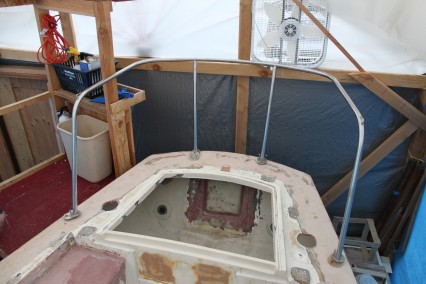
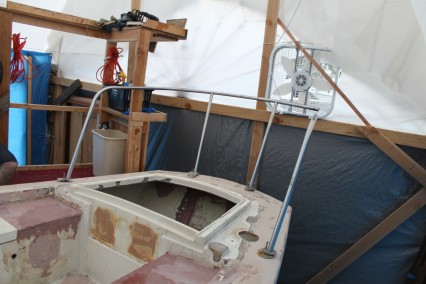
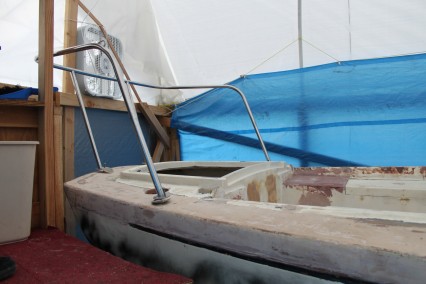
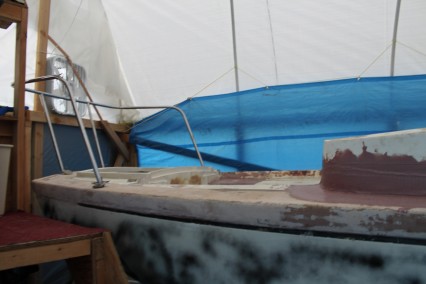
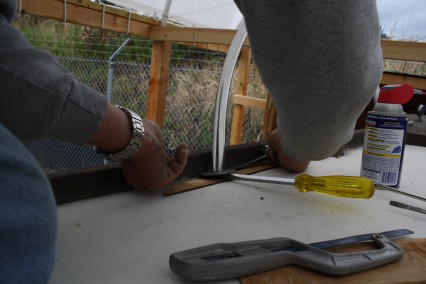
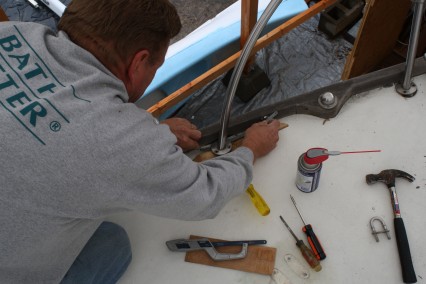
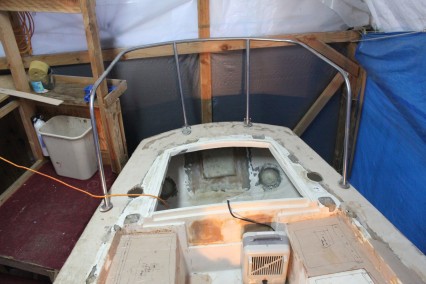
Comment Form